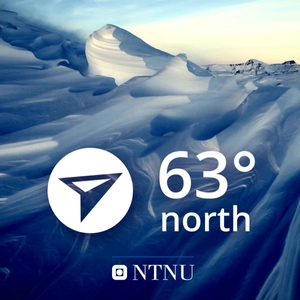
63 Degrees North
NTNU
Hosted on Acast. See acast.com/privacy for more information.
All episodes
Best episodes
Seasons
Top 10 63 Degrees North Episodes
Goodpods has curated a list of the 10 best 63 Degrees North episodes, ranked by the number of listens and likes each episode have garnered from our listeners. If you are listening to 63 Degrees North for the first time, there's no better place to start than with one of these standout episodes. If you are a fan of the show, vote for your favorite 63 Degrees North episode by adding your comments to the episode page.

Not enough COVID-19 tests? No problem, we'll make them!
63 Degrees North
02/19/21 • 21 min
Not enough COVID-19 tests? No problem, we’ll make some!
When the coronavirus first transformed from a weird respiratory disease centered in Wuhan, China to a global pandemic, no one was really prepared. Worldwide, no one had enough masks, personal protective gear and definitely — not enough tests.
The problem was especially acute in places like Norway, a small country that had to compete on a global market to get anything and everything.
What happened when a molecular biologist, some engineers and a couple of PhDs and postdocs put their heads together to design a completely different kind of coronavirus test — and how it changed lives in India, Denmark and Nepal. This last country was given coronavirus tests as NTNU’s annual Christmas gift, in coordination with a volunteer organization called NepalimedNorway.
Our guests on today’s show are Magnar Bjørås, Sulalit Bandyopadhyay, Vegar Ottesen, Anuvansh Sharma and Tonje Steigedal.
There's a transcript for today's show here.
You can read more in detail about the tests here: https://www.ntnu.edu/ntnu-covid-19-test
And here is a list of articles from NTNU and SINTEF’s online research magazine, Norwegian SciTech News:
NTNU’s new COVID-19 test to be used in India and Denmark
NTNU establishes a factory to produce coronavirus tests
From thousands of tiny balls to 150,000 tests per week
This episode was written, recorded, edited and produced by Nancy Bazilchuk. Sound design and editorial assistance from Randi Lillealtern at Historiebruket.
Hosted on Acast. See acast.com/privacy for more information.

02/04/21 • 22 min
It’s no bigger than four decks of cards stacked one on top of the other — a tiny box raided from an Irish church. In Ireland, the box held the holy remains of a saint. What a mound of sand, some leftover nails and the box itself tell us about the Viking raiders who stole it — and what they did with it when they brought it back to Norway.
Our guests for this episode were Aina Heen-Pettersen, a PhD candidate at NTNU, and Griffin Murray, who is a lecturer in the Department of Archaeology at University College Cork.
The reliquary itself is at NTNU’s University Museum in Trondheim. You can see it virtually if you register to view the museum’s Online Collections and search for “shrine”.
A transcript of today’s show is available here.
Here are some of the academic articles on the reliquary research:
Heen-Pettersen, A. (2019). The Earliest Wave of Viking Activity? The Norwegian Evidence Revisited. European Journal of Archaeology, 22 (4), 523-541. doi:10.1017/eaa.2019.19
Pettersen, Aina Margrethe Heen. (2018) Objects from a distant place: transformation and use of Insular mounts from Viking-Age burials in Trøndelag, Central Norway. Anglo-Saxon Studies in Archaeology and History. vol. 21.
Pettersen, Aina Margrethe Heen; Murray, Griffin. (2018) An Insular Reliquary from Melhus: The Significance of Insular Ecclesiastical Material in Early Viking- Age Norway. Medieval Archaeology. vol. 62 (1).
Pettersen, Aina Margrethe Heen. (2014) Insular artefacts from Viking-Age burials from mid-Norway. A review of contact between Trøndelag and Britain and Ireland. Internet Archaeology. vol. 38.
And here are the books that are mentioned in the podcast:
Brunning, S. (2019). The Sword in Early Medieval Northern Europe: Experience, Identity, Representation. Boydell & Brewer. doi:10.1017/9781787444560
Etting, V. (2013) The Story of the Drinking Horn: Drinking Culture in Scandinavia During the Middle Ages
Volume 21 of Publications from the National Museum / Studies in archaeology & history: Publications from the National Museum, ISSN 0909-9506
Lowenthal, D. (2015). The Past is a Foreign Country — Revisited. Cambridge University Press. doi:10.1017/CBO9781139024884
A transcript of today’s show is available here.
Hosted on Acast. See acast.com/privacy for more information.
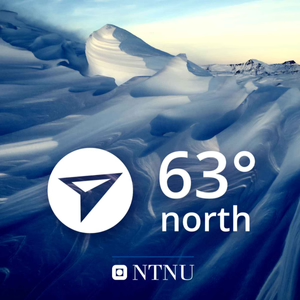
Darwin had Galapagos finches. Norway has… house sparrows?
63 Degrees North
02/26/21 • 25 min
The different species of Galapagos finches, with their specially evolved beaks that allow them to eat specific foods, helped Charles Darwin understand that organisms can evolve over time to better survive in their environment.
Now, nearly 200 years later and thousands of miles away, biologists are learning some surprising lessons about evolution from northern Norwegian populations of the humble house sparrow (Passer domesticus).
Darwin’s finches evolved on the exotic, volcanic Galapagos Islands. NTNU’s house sparrows are dispersed over a group of 18 islands in Helgeland, in an archipelago that straddles the Arctic Circle.
Every summer since 1993, when NTNU Professor Bernt-Erik Sæther initiated the House Sparrow Project, a group of biologists has travelled to the islands collect data on the sparrows. They capture baby birds, measure different parts of their bodies, take a tiny blood sample, and then put a unique combination of coloured rings on their legs that help researchers identify the birds throughout their lifetime.
Those decades of research have given researchers information that can be helpful in managing threatened and endangered species. They have also done some experiments where they made evolution happen in real time — and then watched what happened when they let nature run its course.
And then there was the series of experiments where they learned more than you might want to know about sparrow dating preferences, and about rogue sparrow fathers who court exhausted sparrow mothers — and then fathered children with the cute little she-bird next door.
Our guests for today’s show were Henrik Jensen, Thor Harald Ringsby and Stefanie Muff.
You can find a transcript of the show here.
Selected academic and popular science articles:
From NTNU’s online research magazine, Norwegian SciTech News:
Why aren’t house sparrows as big as geese?
Inbreeding detrimental for survival
Why house sparrows lay big and small eggs
On Darwin
Darwin, Charles (1859) On the Origin of Species by Means of Natural Selection, Or, the Preservation of Favoured Races in the Struggle for Life. London: J. Murray.
Weiner, J. (2014). The beak of the finch: A story of evolution in our time. Random House.
Sulloway, F. J. (1982). Darwin and his finches: The evolution of a legend. Journal of the History of Biology, 15, 1-53.
Sulloway, F. J. (1982). Darwin's conversion: the Beagle voyage and its aftermath. Journal of the History of Biology, 15, 325-396.
Academic articles from the House Sparrow Project:
- Araya-Ajoy, Yimen; Ranke, Peter Sjolte; Kvalnes, Thomas; Rønning, Bernt; Holand, Håkon; Myhre, Ane Marlene; Pärn, Henrik; Jensen, Henrik; Ringsby, Thor Harald; Sæther, Bernt-Erik; Wright, Jonathan. (2019) Characterizing morphological (co)variation using structural equation models: Body size, allometric relationships and evolvability in a house sparrow metapopulation. Evolution. vol. 73 (3).
- Kvalnes, Thomas; Ringsby, Thor Harald; Jensen, Henrik; Hagen, Ingerid Julie; Rønning, Bernt; Pärn, Henrik; Holand, Håkon; Engen, Steinar; Sæther, Bernt-Erik. (2017) Reversal of response to artificial selection on body size in a wild passerine bird. Evolution. vol. 71 (8).
- Ringsby, Thor Harald; Jensen, Henrik; Pärn, Henrik; Kvalnes, Thomas; Boner, Winnie; Gillespie, Robert; Holand, Hå...
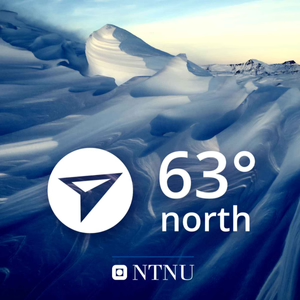
When trees talk
63 Degrees North
11/01/23 • 29 min
In their careful records of climate change over the centuries — and millennia — trees offer a kind of crystal ball on the past. But they can also help researchers figure out everything from what happened in Norway during the Black Death to how Nazis hid an enormous battleship from the Allies during WWII to how much it rained in Norway during millennia past, when it was much warmer than today.
Our guests on today's show are Helene Svarva and Claudia Hartl. You can see a transcript of the show here.
Here's a selection of academic articles discussed in today's show:
Ljungqvist, Fredrik Charpentier; Seim, Andrea; Tegel, Willy; Krusic, Paul J.; Baittinger, Claudia; Belingard, Christelle. (2022) Regional Patterns of Late Medieval and Early Modern European Building Activity Revealed by Felling Dates. Frontiers in Ecology and Evolution
Thun, Terje; Svarva, Helene Løvstrand. (2018) Tree-ring growth shows that the significant population decline in Norway began before the Black Death. Dendrochronologia
Svarva, Helene Løvstrand; Thun, Terje; Kirchhefer, Andreas; Nesje, Atle. (2018) Little Ice Age summer temperatures in Western Norway from a 700-year tree-ring chronology. The Holocene
Thun, Terje. (2009) Norwegian dendrochronology; almost a victim of the Black Death. AmS-Varia
Hosted on Acast. See acast.com/privacy for more information.
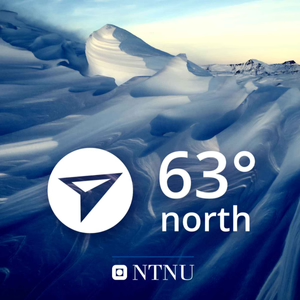
1100 Norwegian teachers fought Hitler — and won
63 Degrees North
10/18/23 • 36 min
When Hitler's troops stormed into Norway on April 9, 1940, Germany's goal was to secure the country’s 1200 km long coastline so iron ore from Swedish mines could continue to flow to the northern Norwegian port of Narvik — and eventually to the German war machine.
But that wasn't all that Hitler and his followers hoped for, as Norwegian teachers would come to learn.
Vidkun Quisling, a Nazi collaborator who nominally headed the Norwegian government during the occupation, wanted Norway to embrace Nazi ideology. He decided the best way to do this was through teachers and schoolchildren. In February 1942, he ordered all teachers to join a new union that would require them to introduce Nazi doctrine to their students. Students were also ordered to join the Norwegian equivalent of the Hitler Youth.
But the teachers refused.
They organized using tactics right out of a spy movie to resist — scribbling messages in invisible ink, meeting secretly in basements and train stations, and printing newsletters to coordinate efforts across the country. For their efforts, 1100 were arrested — and subjected to months of starvation, torture and hard labour.
This week, the story of what happened when the teachers defied Hitler — and won!
My guests on today's show are Martin Øystese and Unni Eikeseth.
Learn more about the teachers' battle:
- The Teacher's Protest tells the full story of the teachers' resistance, in a 2020 video by Jon Seal and available for rental from Vimeo.
- "Tyranny could not quell them," by Gene Sharp, a 24-page booklet published in 1958 by the International Pacifist Weekly that describes the teachers' rebellion, and how the tactics they used could help other groups that are interested in non-violent resistance.
- Lærarkrigen mot Quisling, the Norwegian three-part podcast about the teacher's rebellion (in Norwegian)
- Ø. Hetland, N. Karcher & K. B. Simonsen (2021) Navigating troubled waters: collaboration and resistance in state institutions in Nazi-occupied Norway, Scandinavian Journal of History, 46:1, 84-104, DOI: 10.1080/03468755.2020.1846075
- Norwegian Teachers Stand Firm (1942) 32-page booklet published by the Royal Norwegian Government Press Representatives, Washington, DC.
Hosted on Acast. See acast.com/privacy for more information.

Tea bags on the tundra
63 Degrees North
10/11/23 • 30 min
Up on the Arctic tundra, a young man in chest waders is wandering around a peat bod, burying tea bags — Lipton tea bags, green tea and rooibos, to be exact. This week, I head to Iskoras mountain, a low peak in far northern Norway, outside of the town of Karasjok to find out what burying tea bags in the tundra — and doing sophisticated measurements in a peat bog —can tell us about the future of permafrost and its effects on the climate.
This week's guests are Hanna Lee, Anja Greschkowiak, Lisa van Solt and Daniel Angulo Serrano.
Here are some videos that explain the research and show the field site in more detail:
- A brief description of the project, by Inge Althuizen https://www.youtube.com/watch?v=Sz4argYGIb8
- An artistic video about the project fieldwork by Sasha Azanova. https://vimeo.com/457877275
You can read more about the research in this episode here:
Jiao, Yi; Davie-Martin, Cleo L.; Kramshøj, Magnus; Christiansen, Casper Tai; Lee, Hanna; Althuizen, Inge. (2023) Volatile organic compound release across a permafrost-affected peatland. Geoderma
Lee, H., Christiansen, C., Althuizen, I., Michelsen, A., Dörsch, P., Westermann, S., and Risk, D.: Long lasting greenhouse gas emissions beyond abrupt permafrost thaw event in permafrost peatlands, EGU General Assembly 2022, Vienna, Austria, 23–27 May 2022, EGU22-4211, https://doi.org/10.5194/egusphere-egu22-4211, 2022.
Rixen, Christian; Høye, Toke Thomas; Macek, Petr; Aerts, Rien; Alatalo, Juha M.; Andeson, Jill T.. (2022) Winters are changing: snow effects on Arctic and alpine tundra ecosystems. Arctic Science
Cai, Lei; Lee, Hanna; Aas, Kjetil Schanke; Westermann, Sebastian. (2020) Projecting circum-Arctic excess-ground-ice melt with a sub-grid representation in the Community Land Model. The Cryosphere
Hosted on Acast. See acast.com/privacy for more information.

When the doctor is out
63 Degrees North
10/04/23 • 33 min
Sierra Leone used to be the most dangerous place in the world to give birth. Without enough doctors to do C-sections, women and babies were dying. But what if you didn't need a doctor?
This week, the story of two determined surgeons and a no-so radical idea that is saving lives in Sierra Leone — one emergency operation at a time.
You can read more about the non-profit organization the doctors created to fund their training programme at capacare.org
Our guests on today's show are Håkon Bolkan, Alex van Duinen and Emmanuel Tommy.
Here are some of the academic articles discussed in the show:
- Bolkan, Håkon Angell; Schreeb, Johan; Samai, Mohamed; Bash-Taqi, Donald Alpha; Kamara, T. B.; Salvesen, Øyvind. (2015) Met and unmet need for surgery in Sierra Leone: a comprehensive retrospective countrywide survey from all healthcare facilities performing surgery in 2012. Surgery
- Brolin, Kim; van Duinen, Aalke Johan; Nordenstedt, Helena; Hoijer, J; Molnes, Ragnhild; Frøseth, Torunn Wigum. (2016) The Impact of the West Africa Ebola Outbreak on Obstetric Health Care in Sierra Leone. PLOS ONE
- Bolkan, Håkon Angell; van Duinen, Aalke Johan; Waalewijn, Bart; Elhassein, Mohamed; Kamara, T. B.; Deen, G F. (2017) Safety, productivity and predicted contribution of a surgical task-sharing programme in Sierra Leone. British Journal of Surgery
- Treacy, Laura; Bolkan, Håkon Angell; Sagbakken, Mette. (2018) Distance, accessibility and costs. Decision-making During Childbirth in Rural Sierra Leone: a Qualitative Study. PLOS ONE
- Drevin, Gustaf; Alvesson, Helle Mölsted; van Duinen, Aalke Johan; Bolkan, Håkon Angell; Koroma, Alimamy philip; von Schreeb, Johan. (2019) ”For this one, let me take the risk”: why surgical staff continued to perform caesarean sections during the 2014–2016 Ebola epidemic in Sierra Leone. BMJ Global Health
- van Duinen, Aalke Johan; Kamara, Michael M.; Hagander, Lars; Ashley, Thomas; Koroma, Alimamy Philip; Leather, Andy J.M.. (2019) Caesarean section performed by medical doctors and associate clinicians in Sierra Leone. British Journal of Surgery
- van Duinen, Aalke Johan; Westendorp, Josien; Kamara, Michael M; Forna, Fatu; Hagander, Lars; Rijken, Marcus J.. (2020) Perinatal outcomes of cesarean deliveries in Sierra Leone: A prospective multicenter observational study. International Journal of Gynecology & Obstetrics
Hosted on Acast. See acast.com/privacy for more information.

Listening to Leviathans: Sounds from the deep
63 Degrees North
09/27/23 • 30 min
Norwegian technology, courtesy of the 19th-century whaler Svend Foyn, played a critical role in establishing the modern era of industrial whaling.By the time the 1960s rolled around, most large whale populations hovered on the brink of extinction. Now, Norwegian researchers are testing new technologies so they can track and study these marine giants — and help protect them. This week, tapping into fibre-optic cables to eavesdrop on whales in a way that's never been done before— and how deploying a comprehensive library of whale dialects can help prevent ship-whale collisions in busy California shipping ports. This week's guests are Jennifer Bailey, a professor at NTNU's Department of Sociology and Political Science; Martin Landrø, a professor at NTNU's Department of Electronic Systems; Léa Bouffaut, a postdoc at the Cornell University K. Lisa Yang Center for Conservation Bioacoustics; and Ana Širović, an associate professor at NTNU's Department of Biology. Ana's work with whale dialects and ship strikes is part of the Whale Safe Project.
You can read more about the fibre-optic research in these articles from Norwegian SciTech News:
Tracking whales as they cruise the Arctic
Eavesdropping on the Earth itself
Eavesdropping on whales in the High Arctic
Here are some of the academic articles related to the research discussed in the episode.
- Landrø, M., Bouffaut, L., Kriesell, H.J. et al. Sensing whales, storms, ships and earthquakes using an Arctic fibre optic cable. Sci Rep 12, 19226 (2022). https://doi.org/10.1038/s41598-022-23606-x
- Léa Bouffaut, Kittinat Taweesintananon, Hannah Kriesell, Robin A Rørstadbotnen, John R Potter, Martin Landrø, Ståle E Johansen, Jan K Brenne, Aksel Haukanes, Olaf Schjelderup and Frode Storvik. Eavesdropping at the speed of light: distributed acoustic sensing of baleen whales in the Arctic. Frontiers in Marine Science. doi: 10.3389/fmars.2022.901348
- Rørstadbotnen RA, Eidsvik J, Bouffaut L, Landrø M, Potter J, Taweesintananon K, Johansen S, Storevik F, Jacobsen J, Schjelderup O, Wienecke S, Johansen TA, Ruud BO, Wuestefeld A and Oye V (2023) Simultaneous tracking of multiple whales using two fiber-optic cables in the Arctic. Front. Mar. Sci. 10:1130898. DOI=10.3389/fmars.2023.1130898
Hosted on Acast. See acast.com/privacy for more information.
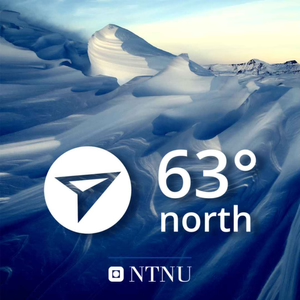
Wax, wood and CO2
63 Degrees North
11/15/22 • 24 min
Three tons of wax. A 4-story office building made almost entirely of wood. And putting CO2 to work instead of letting it heat up the planet: Scientists and engineers across the globe are harnessing unlikely materials to cut greenhouse gas emissions.
Today's show looks at how a zero-emissions office building combines integrated solar panels, heat pumps and a huge vat of wax to heat and power the structure, with enough left over to sell. We'll also look at highly efficient heat pumps using CO2 as the stuff inside that makes it work. They're spreading worldwide, and can be found everywhere from inside your Volkswagen ID electric car to the Large Hadron Collider. And also — at a hotel in Hell, Norway, where electricity use was cut by 70 per cent — without making a pact with the devil!
Our guests on today's show are Tore Kvande and Armin Hafner.
There's a video on Professor Hafner's work at CERN here, and more about CoolCERN, here.
Find a related podcast episode here.
Read more:
- Nocente, A, Time, B, Mathisen, H.M, Kvande, T & Gustavsen, A: The ZEB Laboratory: the development of a research tool for future climate adapted zero emission buildings. 8th International Building Physics Conference. J. Phys.: Conf. Ser. 2021, Vol 2069, Article no. 012109
- Sevault A., Næss E., Active latent heat storage using biowax in a central heating system of a ZEB living lab; Proc. of the 14th IIR-Gustav Lorentzen Conf. on Natural Refrigerants - GL2020. Internat. Inst. of Refrig. 2020 ISBN 978-2-36215-040-1. s.493-498, doi.org/10.18462/iir.gl.2020.1146 (Published online 7 December 2020)
- Pardiñas, Ángel Á.; Jokiel, Michael; Schlemminger, Christian; Selvnes, Håkon; Hafner, Armin. (2021) Modeling of a CO2‐based integrated refrigeration system for supermarkets. Energies. vol. 14:6926 (21).
- Barroca, Pierre, Armin Hafner, Bart Verlaat, Paolo Petagna, Wojciech Hulek, Lukasz Zwalinski, Pierre Hanf, Michele Battistin, Loic Davoine, and Daniella Teixeira. 2021. "An Ultra-Low Temperature Transcritical R744 Refrigeration System for Future Detectors at CERN LHC" Applied Sciences 11, no. 16: 7399. https://doi.org/10.3390/app11167399
Hosted on Acast. See acast.com/privacy for more information.
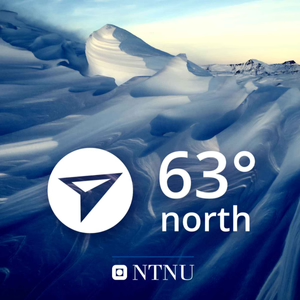
The Longship that could help save the planet
63 Degrees North
02/11/21 • 29 min
Everyone knows there’s just too much carbon dioxide in the atmosphere — and we’re heating up the planet at an unprecedented pace.
More than 20 years ago, Norwegians helped pioneer an approach to dealing with CO2 that’s still ongoing today— they captured it and pumped it into a rock formation deep under the sea.
Now the Norwegian government is building on those decades of experience with a large-scale carbon capture and storage project called Longship.
Will it work? Is it safe? And is it something that other countries can benefit from, too?
Our guests for this episode were Olav Bolland, Philip Ringrose and Mona Mølnvik.
You can find the transcript of the episode here.
More resources/reading:
Olav Bolland’s book:
Nord, Lars O.; Bolland, Olav. (2020) Carbon Dioxide Emission Management in Power Generation. Wiley-VCH Verlagsgesellschaft. 2020. ISBN 978-3-527-34753-7.
You can read the White Paper from the Norwegian government about the Longship project here.
Here’s a press release from 15 December 2020 that reports on the Norwegian Storting’s funding approval for the Longship project.
This link takes you to a transcript, in English, from the press conference from 21 September 2020 in which Norwegian officials announce the Longship plan.
Here’s the official website for the Longship CCS project.
You can read about the Norwegian CCS Research Centre that Mona Mølnvik is head of here.
An older, but still good video about Sleipner
https://www.youtube.com/watch?v=KG5_WSXj1pI&t=271s
Philip Ringrose’s group’s most recent video
https://www.youtube.com/watch?v=pAAb1S4bqks&t=28s
A e-lecture by Philip Ringrose about CCS
https://www.youtube.com/watch?v=eozVdrvejDs&t=400s
Selected popular science and scientific articles
If the world can capture carbon, there’s capacity to store it. Norwegian SciTech News, 13 December 2019
The world doesn’t realise how much we need CO2 storage. Norwegian SciTech News, 5 December 2016
Carbon capture and storage essential to reach climate target. Norwegian SciTech News, 7 April 2014
Ringrose, Philip; Meckel, T A. (2019) Maturing global CO2 storage resources on offshore continental margins to achieve 2DS emissions reductions. Scientific Reports. 9 (1).
Grethe Tangen, Erik G.B. Lindeberg, Arvid Nøttvedt, Svein Eggen. (2014)
Show more best episodes

Show more best episodes
FAQ
How many episodes does 63 Degrees North have?
63 Degrees North currently has 29 episodes available.
What topics does 63 Degrees North cover?
The podcast is about Evolution, Marine Biology, Podcasts, Technology, Science, Green Energy and Biology.
What is the most popular episode on 63 Degrees North?
The episode title 'Seabed mining – savior or scourge?' is the most popular.
What is the average episode length on 63 Degrees North?
The average episode length on 63 Degrees North is 26 minutes.
How often are episodes of 63 Degrees North released?
Episodes of 63 Degrees North are typically released every 14 days, 2 hours.
When was the first episode of 63 Degrees North?
The first episode of 63 Degrees North was released on Jan 20, 2021.
Show more FAQ

Show more FAQ